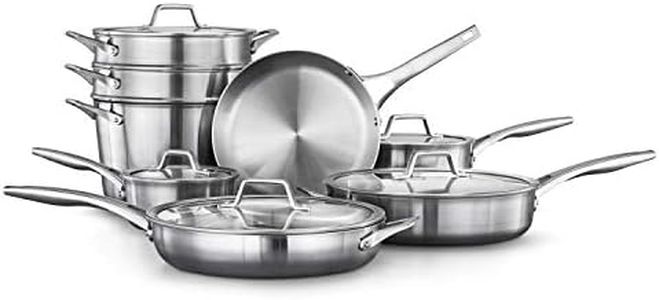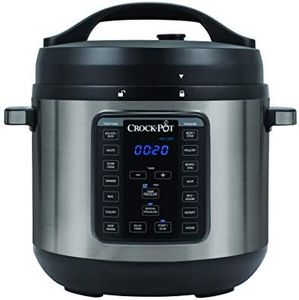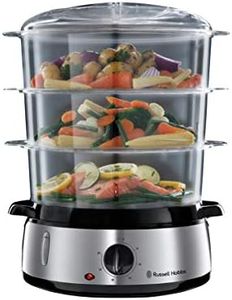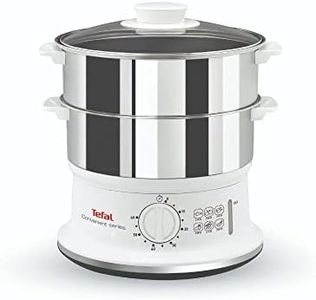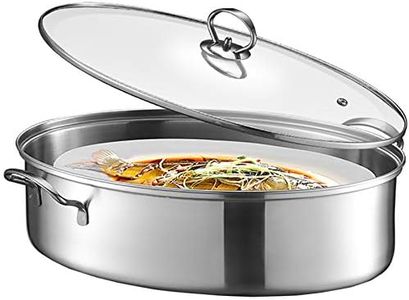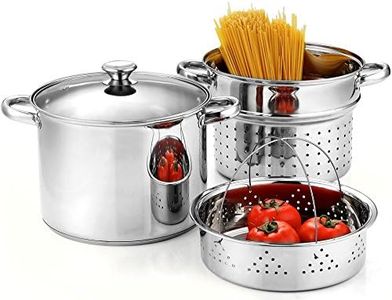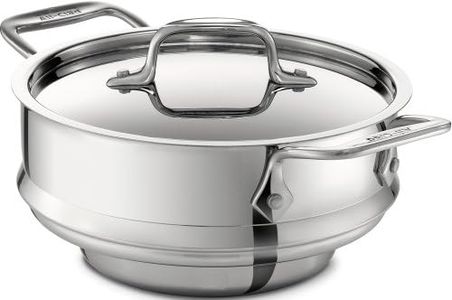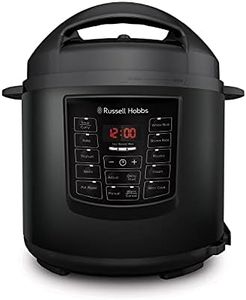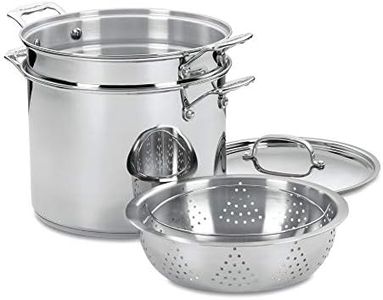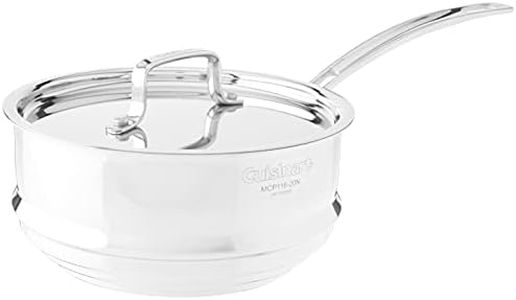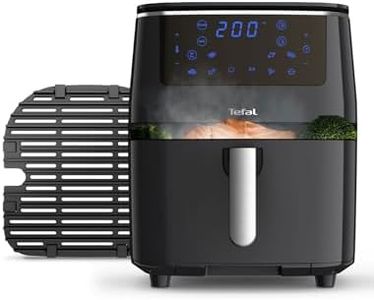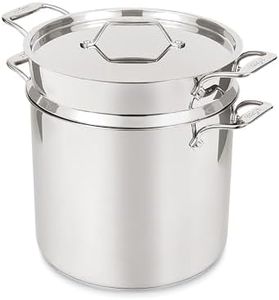We Use CookiesWe use cookies to enhance the security, performance,
functionality and for analytical and promotional activities. By continuing to browse this site you
are agreeing to our privacy policy
10 Best Steamer Pots
From leading brands and best sellers available on the web.Buying Guide for the Best Steamer Pots
When choosing a steamer pot, it's important to think about what you'll be using it for in your kitchen. Steamer pots are great for cooking vegetables, fish, dumplings, and even reheating food using steam, which helps retain nutrients and moisture. The perfect steamer pot should fit your cooking habits, the size of your household, and the kinds of meals you like to prepare. Paying close attention to the important features will help you make a choice that will be useful and enjoyable for years to come.MaterialThe material of a steamer pot affects how well it conducts heat, its durability, and how easy it is to maintain. Common materials include stainless steel, aluminum, and bamboo. Stainless steel is very durable, resists rust, and distributes heat evenly, making it great for daily use. Aluminum conducts heat well but may not be as long-lasting and can react with acidic foods. Bamboo steamers are traditional for Asian cuisine, letting steam circulate gently, but they may require more careful cleaning. Your needs and cooking style should guide you; if you want easy maintenance and long life, stainless steel is a solid choice. If you prefer authentic experiences for foods like dumplings, bamboo steamers might appeal to you.
CapacityCapacity refers to how much food you can cook at once in the steamer pot. This is usually described in quarts or liters, or by the diameter and number of tiers (levels). Smaller pots (2-3 quarts or single tier) are best for individuals or small families, while larger ones (5 quarts or more or multi-tier) are ideal for meal prepping or bigger families. Consider how many people you'll usually be cooking for and if you like to prepare large batches or entertain guests.
Number of TiersThe number of tiers is how many separate steaming sections the pot has. Single-tier steamers are simple and best if you typically steam one thing at a time. Two-tier or multi-tier steamers let you cook different foods simultaneously, saving time and making meal preparation more flexible. If you often cook full meals or want the option to steam several things at once, choose a two-tier or multi-tier steamer.
Lid TypeThe lid helps keep steam inside, which is essential for cooking food properly. Glass lids let you see your food without lifting the lid and losing steam, while metal lids may be more durable but don’t allow for monitoring your food. If you like to keep an eye on your food or avoid overcooking, a glass lid can be handy. If you prioritize durability or don’t mind checking food manually, a metal lid will serve you well.
Compatibility with CooktopsSome steamer pots are designed for certain cooktops such as induction, gas, or electric. Not all materials work on induction stoves, for example. Make sure the pot is suitable for your kitchen's stove type. Check labels or product details to ensure compatibility—if your stove is induction, you'll want a pot with a magnetic base.
Ease of CleaningEase of cleaning is important because steaming can leave food residue behind. Stainless steel is usually dishwasher safe and easily wiped clean, while bamboo steamers must be hand-washed and dried well to prevent mold. If you value convenience, a dishwasher-safe metal steamer may best suit your lifestyle. For those who enjoy traditional cooking and don’t mind a little extra care, bamboo steamers can also be a joy.

